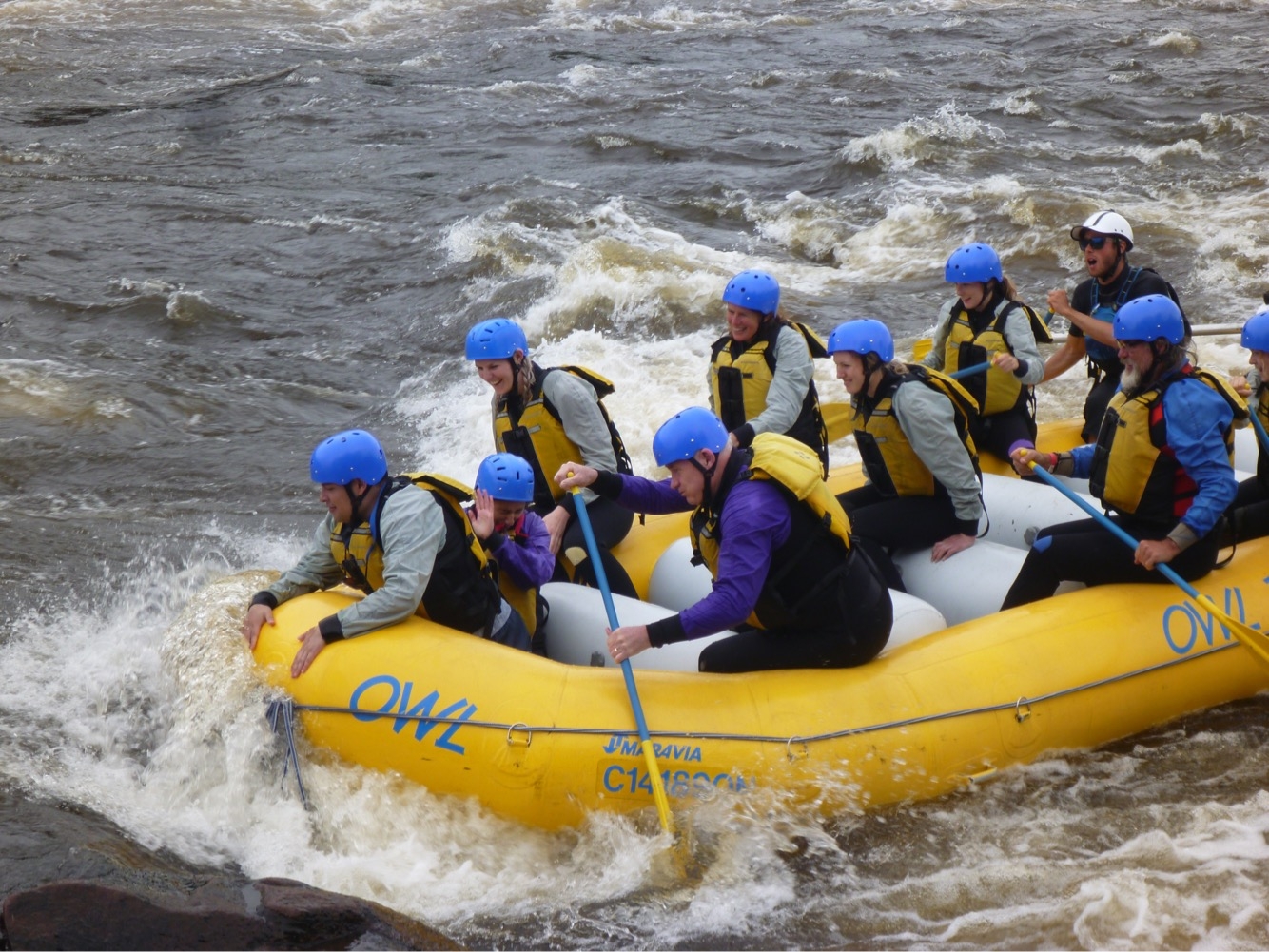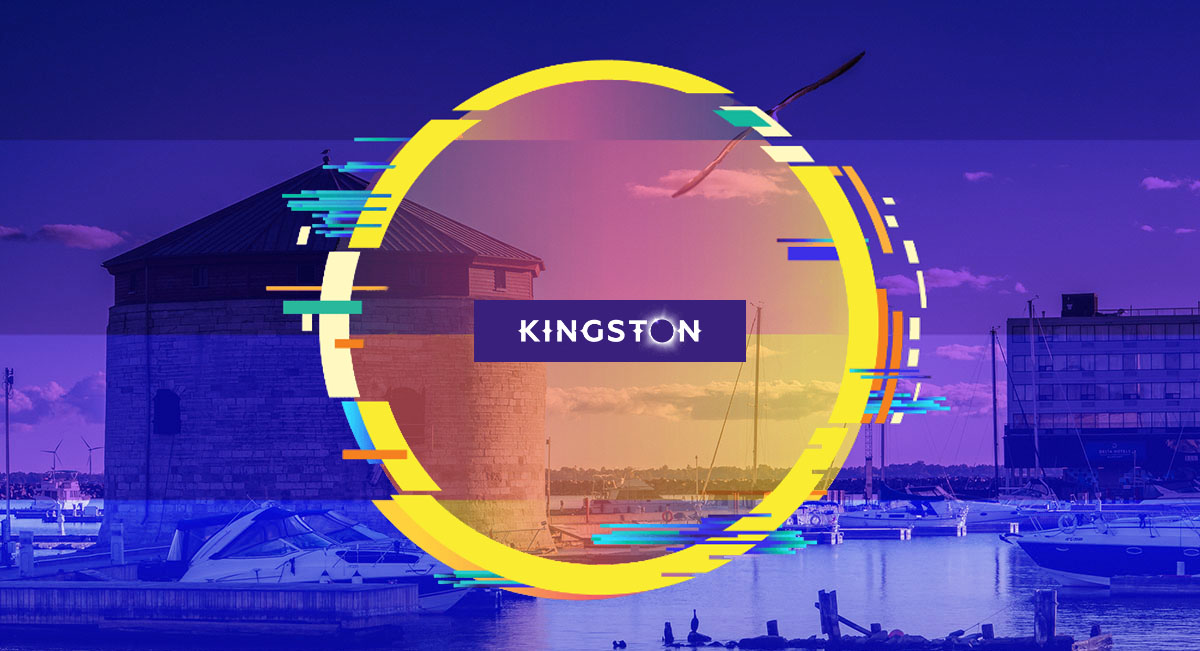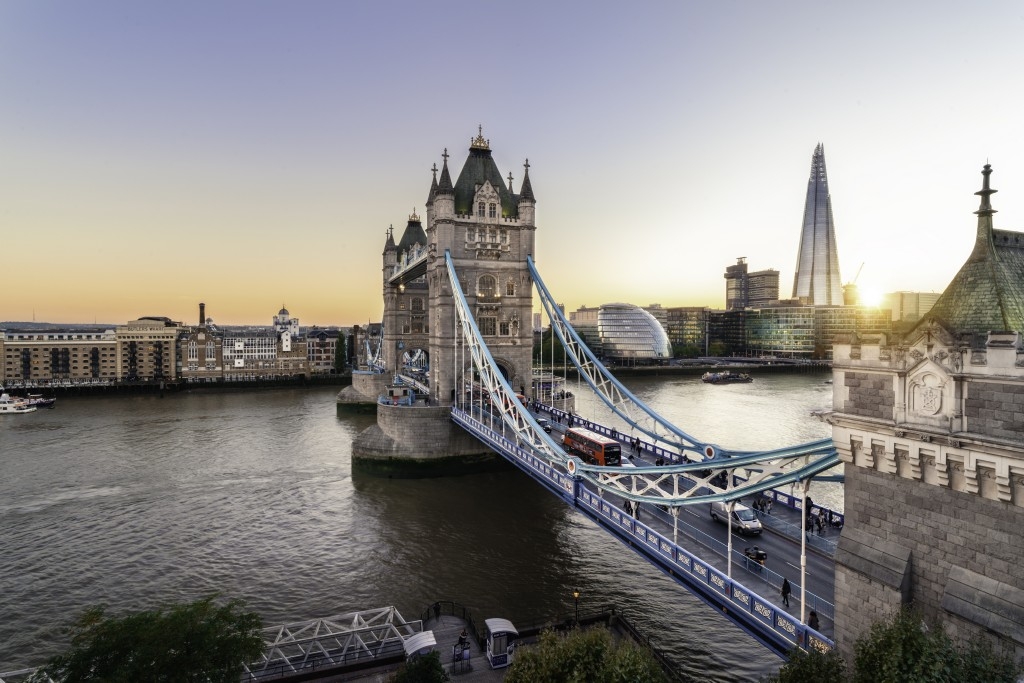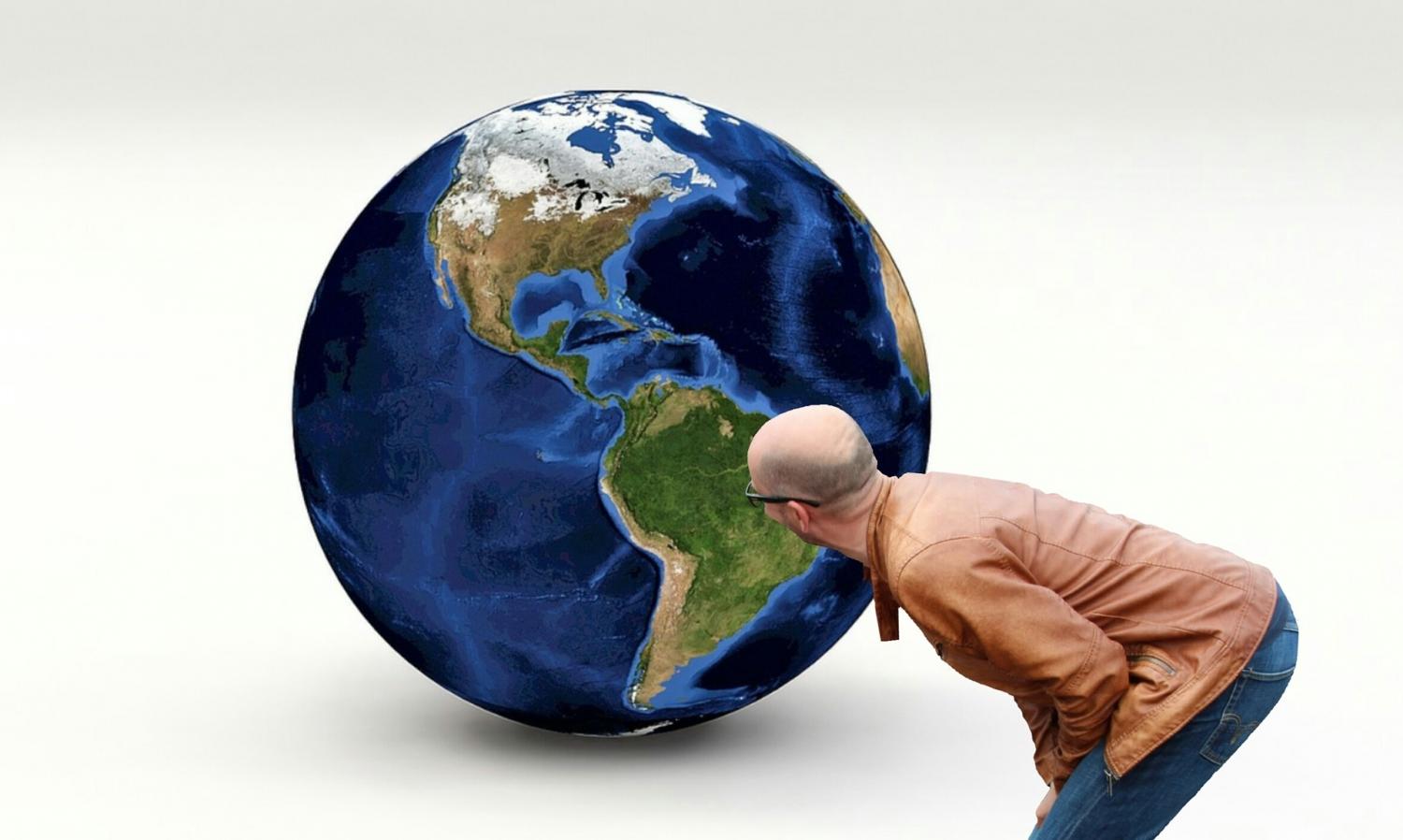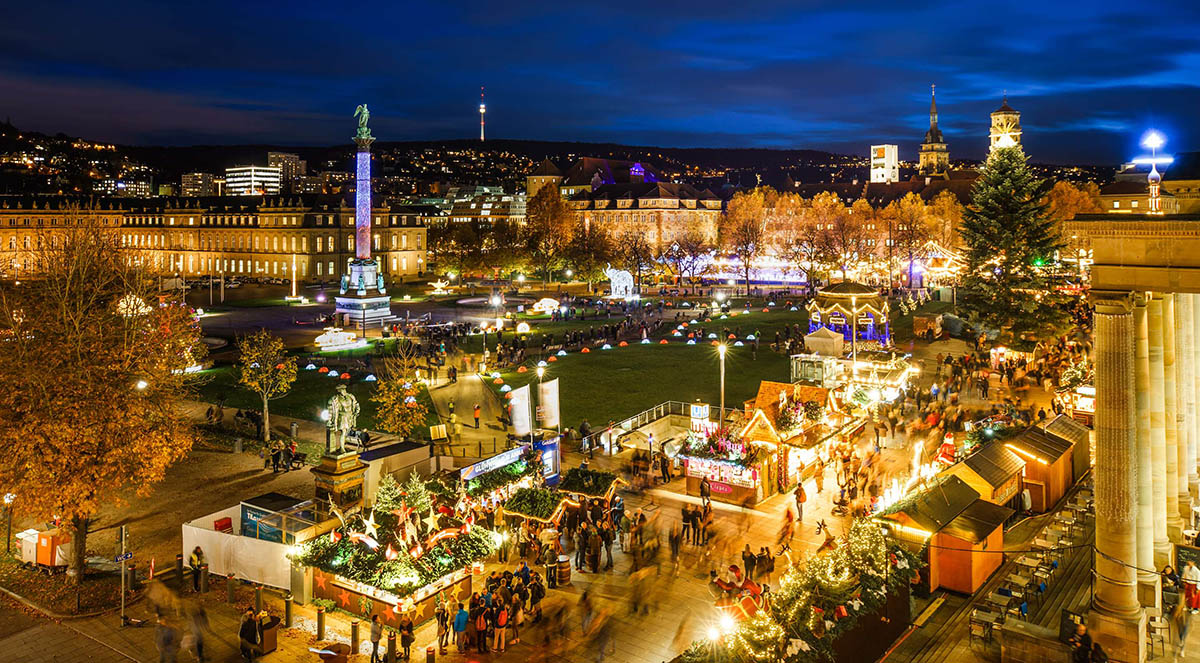
German Christmas Markets – A Festivus for the Rest of Us
The word German invokes a wide range of nouns and adjectives: Alps, fast cars, Oktoberfest, efficiency, and you wouldn’t be wrong if you added Christmas Markets.
In Ontario, annual holiday bazaars are part of the lead-up to Christmas, and since 2019, The Ottawa Christmas Market at Lansdowne has become a seasonal destination for locals to meet up under the twinkling lights, browse vendors set up in mini-mangers-like stalls, and get in the festive spirit.
Germany has been home to Christmas markets since the Middle Ages. Perfected over the last 400 years, they are an art form celebrated by locals and tourists alike.
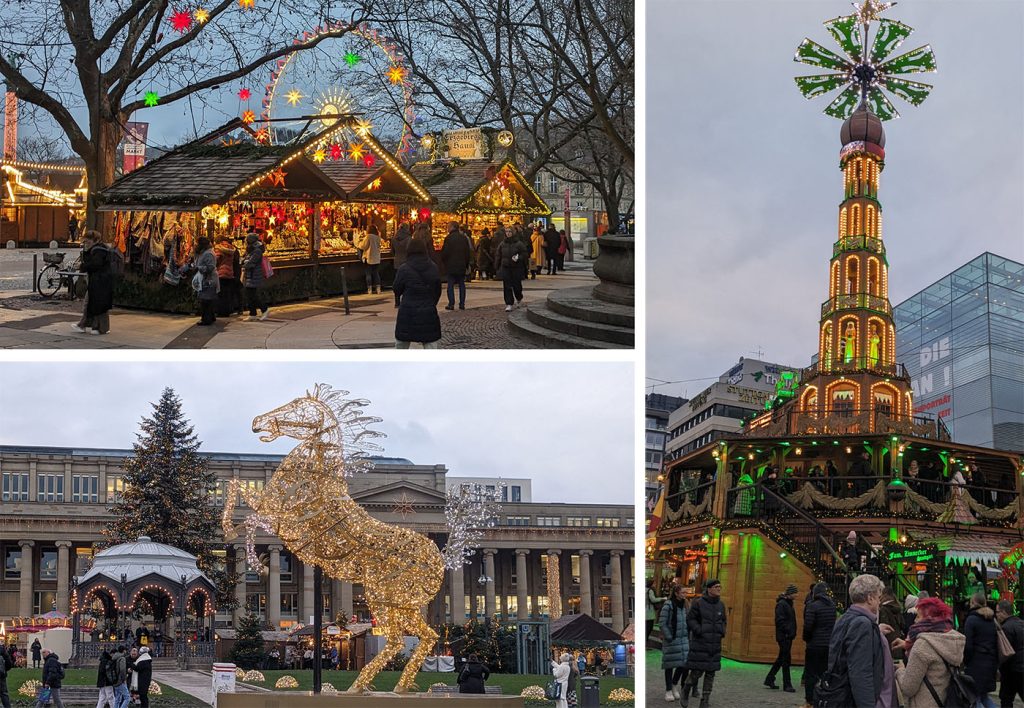
The capital of the southwestern state of Baden-Württemberg is Stuttgart, which derives its name from the word ‘Stutengarten,’ an old German word for horse yard, as the area was formerly a leader in breeding cavalry horses. The black stallion on the coat of arms immortalizes this status. The stallion is also incorporated into the logo of Porsche, who, along with Mercedez Benz, are headquartered in Stuttgart. Both automakers have top-rated museums that attract visitors from around the world.
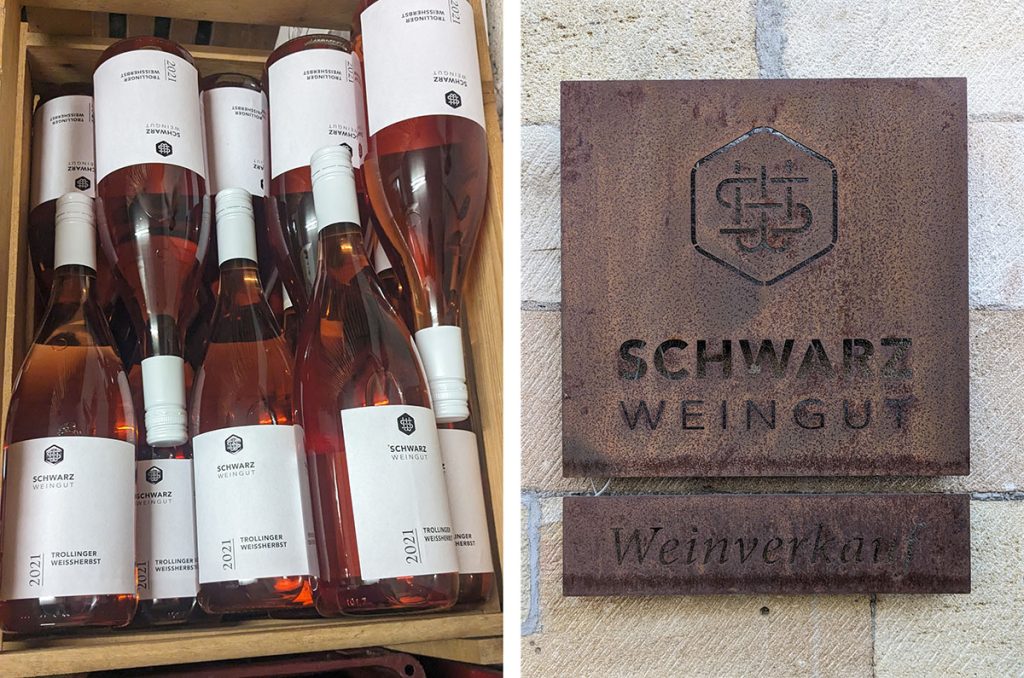
The city of Stuttgart is surrounded by hills that are covered with vineyards. The local semi-sweet wine is enjoyed year-round, but in winter, it is used to make gluhwein or mulled wine, a highlight of German Christmas markets. To find out more, we headed to Schwartz Weingut and met with Stephi, a descendant of a family producing wine on the hills of Stuttgart for over 300 years. Their winery was the original house on a street that is now full of suburban homes. The location is very convenient for locals who can pop in and buy directly from the winery, and it fits in perfectly with Stuttgart’s progressive ‘green city’ status that is looking for people to abandon their cars in lieu of public transit. A contradiction for the car capital of Europe, but Daimler and Porsche invest heavily in environmental protection goals and compliance.
Stephi explains that the region is known for the Trollinger grape variety, but other varieties, such as Pinot varieties and Riesling, are overtaking it despite the profound pride the Swabians have in their local grape. Gluhwein is traditionally made from red wine but is also available in white. For a couple of extra Euros, you can get it spiked with a shot of rum or other liqueurs.
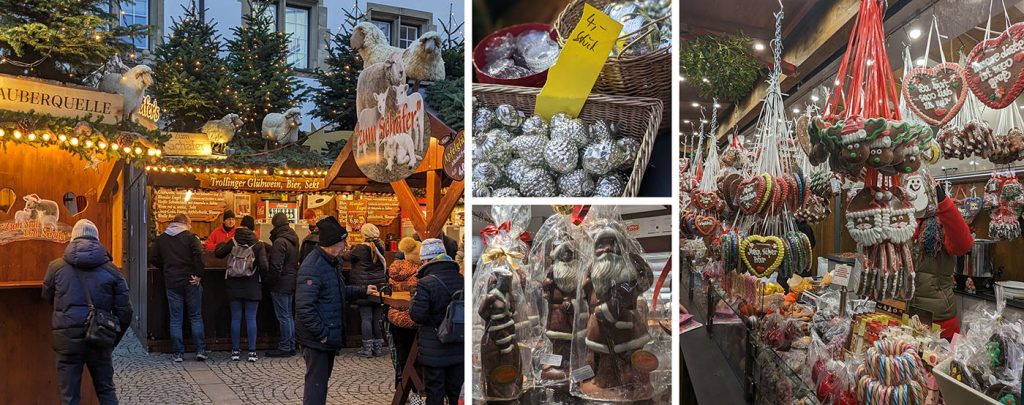
In the city centre, as the sun sets, the crowds descend on the Schlossplatz or Palace Square, which is surrounded by the Old Palace — now the Württemberg State Museum (the new Palace) — home to the Kings of Württemberg until the mid-19th century, the Kunstgebäude gallery, and a trendy shopping district. The area is so large that every corner seems to hold yet another Christmas market. Among the things that make the Stuttgart Christmas Market unique is that it’s a month-long event and the wooden huts are decorated with elaborate decorations; each vendor has taken extraordinary measures to embellish their booth. Young and old are out on this cold mid-week evening, taking in the magical atmosphere and shopping the wares on offer: carved nativity scenes, Christmas decorations, candles, roasted nuts, sausages, and the ubiquitous gluhwein. There is a sit-on miniature railway and crafts for kids, all set against the backdrop of Christmas music.
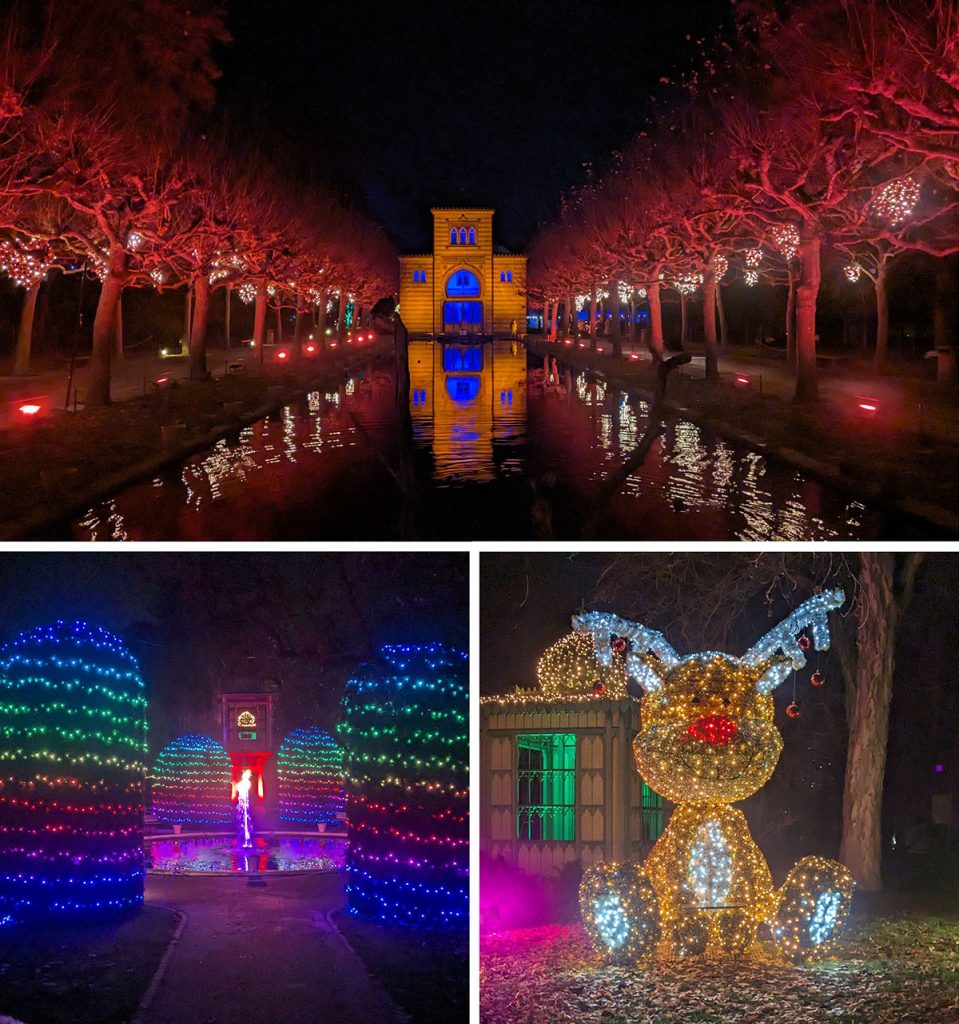
A few train stops from Palace Square is the Wilhema Zoo and Botanical Garden, which transforms into a Christmas Garden during the holiday season. A path takes you on a two-kilometre walk through synchronized sound and light displays. The Scrooge-proof attraction is guaranteed to get young and old into the festive spirit. Warm up on your walk by stopping for some . . . you guessed it . . . gluhwein. The event is very popular, so when you go, make sure to purchase tickets in advance.
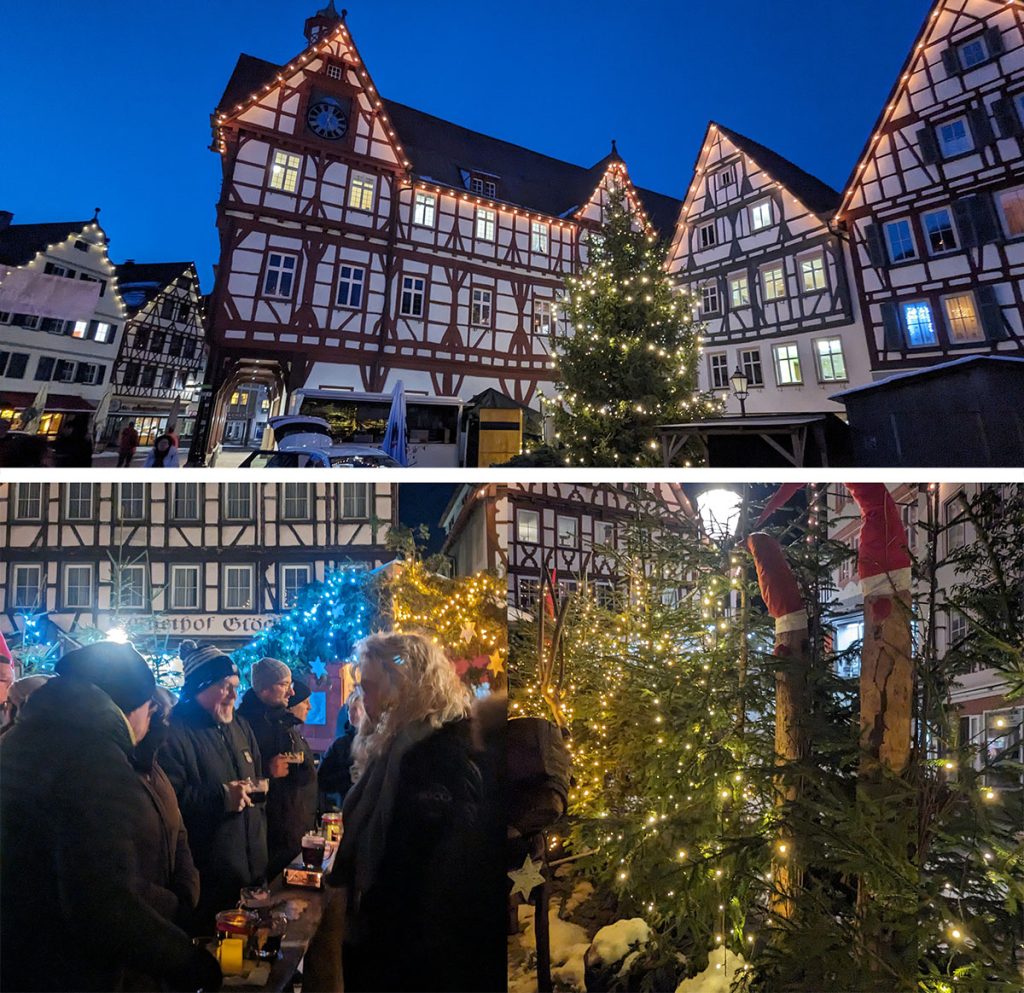
Most towns in Baden-Württemberg host Christmas markets; the only difference appears to be purely one of scale. In the historic town of Bad Urach, the half-timbered 15th- and 16th-century homes (miraculously untouched by WWII allied bombing raids) with white Christmas lights trimming their soffits create a simply magical backdrop for a Christmas market. Here, the market lasts only one week, but it is a sight to behold.
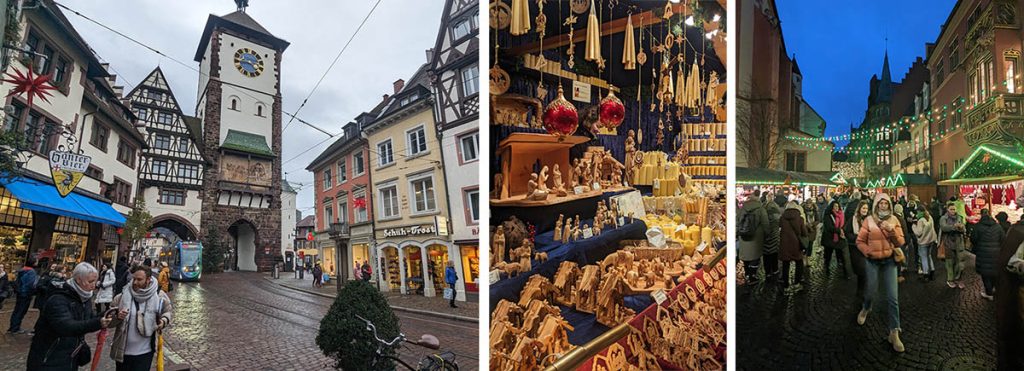
The town of Freiburg is no stranger to markets. Six days a week, you can shop for local food and produce from stalls set up around the cathedral with its beautiful spire that looks like intricate lacework. Miraculously, the cathedral survived WWII bombings that levelled all the surrounding buildings. The Freiburg Christmas Market winds in and out of the cobblestoned streets in the old town. It appears that everybody meets on the streets to take in the annual Christmas Market tradition.
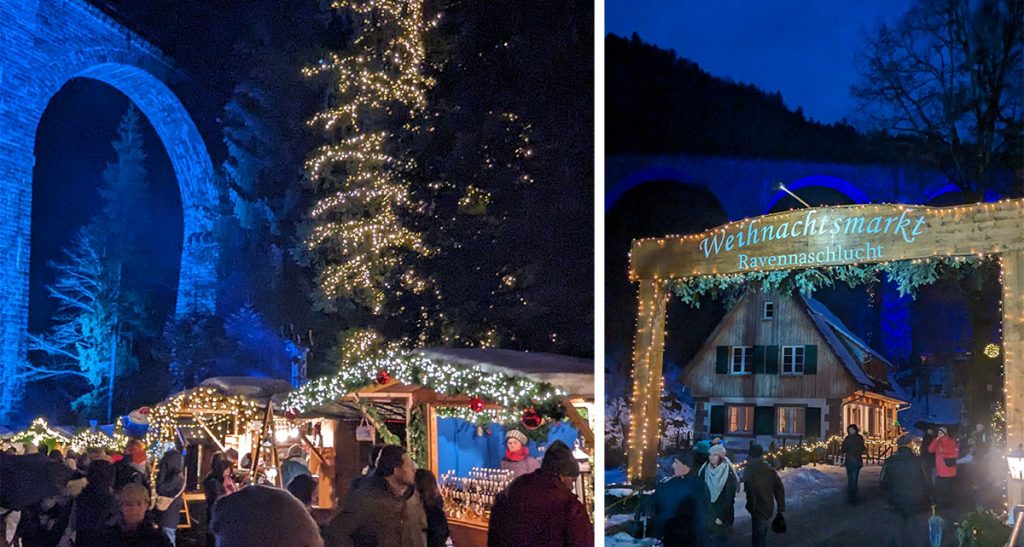
One of the most magical Christmas markets is held in a steep ravine bisected by a magnificent, 40-metre-high curved arched viaduct. The forest setting and the spectacular lighting on the stone bridge at Ravenna Gorge’s Weihnachsmarkt combine to make it an absolute winter wonderland. A path behind the wooden vendor stalls leads to the story of the nativity told in multiple expertly carved, close-to-life-size wooden scenes. With music playing, fire pits to warm yourself or roast marshmallows, and the scent of warm spiced wine, the market at Ravenna Gorge is one of a kind.
Ravenna Gore is accessible by public transportation, and with limited on-site parking, organizers encourage visitors to leave their cars at home. This and other sustainable measures, such as eliminating single-use plastics, have earned the market the official “Green Event BW” from the Baden-Württemberg Ministry of the Environment.
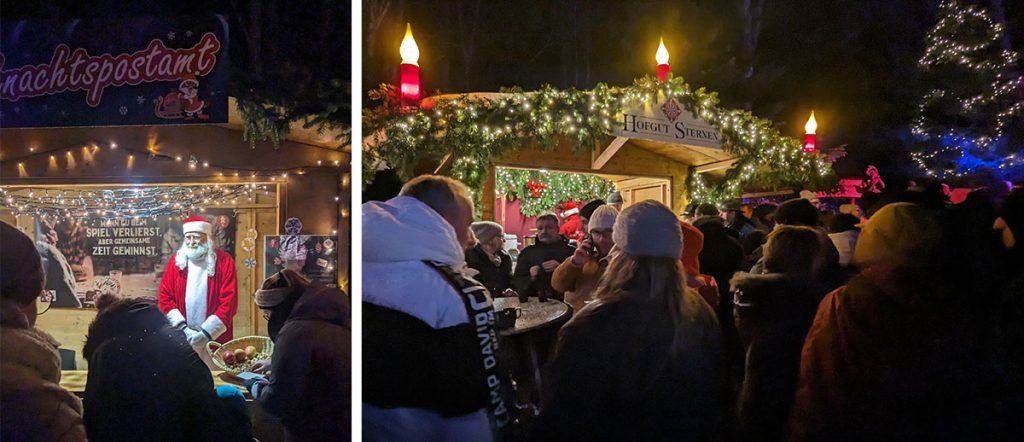
In fact, disposable cups, neither paper nor plastic, are found in Christmas markets in Baden-Württemberg. It is an impressive feat, given the amount of gluhwein consumed. In their place, vendors add a small deposit fee to the price of each beverage sold, and consumers have the choice to return the cup for reimbursement or keep it as a memento. New cups are designed every year, and those who collect them apparently pull them out to display them as part of their annual Christmas decorations.
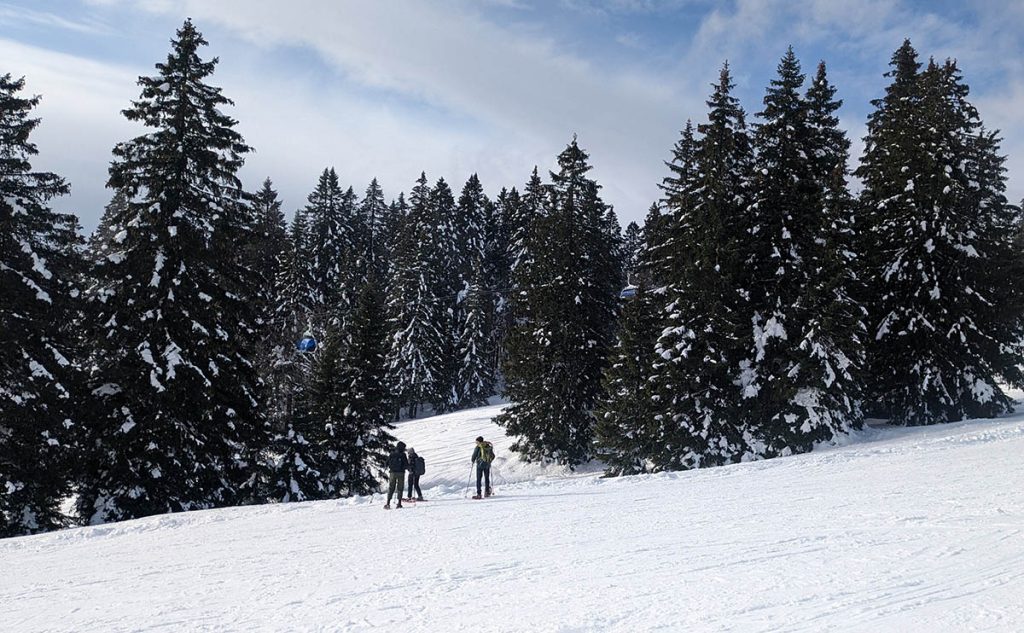
Black Forest
When speaking with locals in Baden-Württemberg, it doesn’t take long before the Black Forest is mentioned. The region encompasses just over 6,000 square kilometres and is famous for its mountain lakes, hiking trails and skiing. Incredibly, it is accessible by public transportation, so vacationers can take a train to the ski resort at Feldberg im Schwarzwald. At the base, opposite the learn to ski area, sits the Haus Der Natur or House of Nature, a nature conservation centre that is both a museum and an information centre. Visitors can also book tours with the local forest ranger and, in winter, take a guided snowshoe hike. Snowshoeing is a wonderful introduction to winter sports, and the guides are keen to share their knowledge of the Black Forest Biosphere Reserve.
Travelling to Stuttgart
From North America, fly to Frankfurt and connect to Stuttgart on a DB train. There is a train station with an information centre at the airport. Once in Stuttgart, the local public transportation is extensive and easy to use. Included in the price of your DB train ticket is access to local transport for the remainder of the day.
Travelling between Stuttgart and Freiburg is easy enough. It involves switching trains, but everything is well-marked, and most Germans speak English if you get turned around. You can even travel to Ravenna Gorge by train.
Where to Stay
In Stuttgart, we stayed at the Arcotel Camino Stuttgart. The hotel is within walking distance of the train station and offers a superb breakfast buffet. The rooms are modern and very comfortable.
In Freiburg we stayed at the Dorint Thermenhotel. Located about 30 kilometres from the city centre, the hotel offers modern ski-resort vibes with direct access to thermal baths. The Black Forest is well known for its thermal baths, which date back to Roman times.
For more information on travel to Baden-Württemberg, visit https://www.germany.travel/en/home.html
Header image: Stuttgart’s Schlossplatz (Palace Square) courtesy © Stuttgart-Marketing GmbH, Sevencity. All other images, Karen Temple

